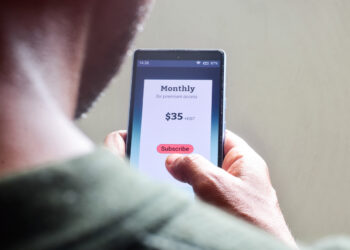
- Image by Getty Images via Daylife
My little self-publishing saga continues. The novel I’ve published is now listed on Amazon.com (in print and for the Kindle), and at Barnes & Noble (print only). It’s available on the iPhone through Smashwords. It’s out for review with some online review sites. Advertising is placed in AdWords, Yahoo! Sponsored Search, and Facebook. My first signing is scheduled, and another is in the works. And the printed editions have arrived, and they look great.
Whew! This is a lot of work!
This post is about making the ebook (Kindle and iPhone) versions, and just how easy it was. I can’t imagine publishing being any more frictionless, but it takes a lot of basic infrastructure (PDF, broadband, .zip, .jpg) to make it so.
For an author, however, epublishing is a simple option with a small audience.
- The Kindle version. Publishing to the Kindle was pretty effortless. I just had to upload cover art and the Word doc of the finished book, set my price, and wait for Amazon to process the files. File processing took a lot longer than I think it should have, given how clean the Word file was. Amazon promises 12-72 hours, but it took 96+ hours, far longer than expected.
- The iPhone version. I’ve installed Stanza on my iPhone as its ebook reader, and found a catalog entry for Smashwords there. It’s a company that lets self-published authors get their works on the iPhone, set their pricing, and free preview percentage (10% free, for example). Their file processing engine they’ve affectionately dubbed “the Meatgrinder.” It works very well, and quickly. You just load your cover and Word doc, fill out a couple of online forms, upload the files, and it’s published. They even have a nice, multiformat style guide. As you set your price, a handy pie chart shows you your share, their share, and a small fee slice (still their share, but a different flavor of pie, I suppose). I initially uploaded the wrong Word file (I was in a hurry), discovered the mistake, and re-uploaded the right one. The correction was seamless and immediate.
From a business perspective, I can set the price of ebook versions much lower and actually make more per sale than I will for print. Printed books eat their prices with manufacturing and shipping. These necessities of print squeeze costs toward the market’s price point for content. However, the market’s price point for digital content is lower than for print, and may be closer to free than I’d like to think. I’m charging for my iPhone version, but activity has been slight. I don’t think there’s a market there yet.
From an author’s perspective, there’s a lot to be said for digital sales. I can fix files on my own, see sales immediately, review site traffic, and tune the administrative aspects quickly. It’s almost addictive, and it beats a quarterly or semi-annual royalty statement for information and timeliness.
Publishing in digital formats is simple and frictionless. As the world continues to move toward print-on-demand and purchase-on-demand, this digital infrastructure will keep evolving, bringing more variety to the consumer.
But is the consumer going to be there?
(Next week — the value of aesthetics, control, craft, and print.)
Discussion
5 Thoughts on "The Meatgrinder and eBooks"
Excellent article.
thank you for writing about this.
![Reblog this post [with Zemanta]](http://img.zemanta.com/reblog_e.png?x-id=b842b4f8-51d6-49e2-969c-237478e70e62)


